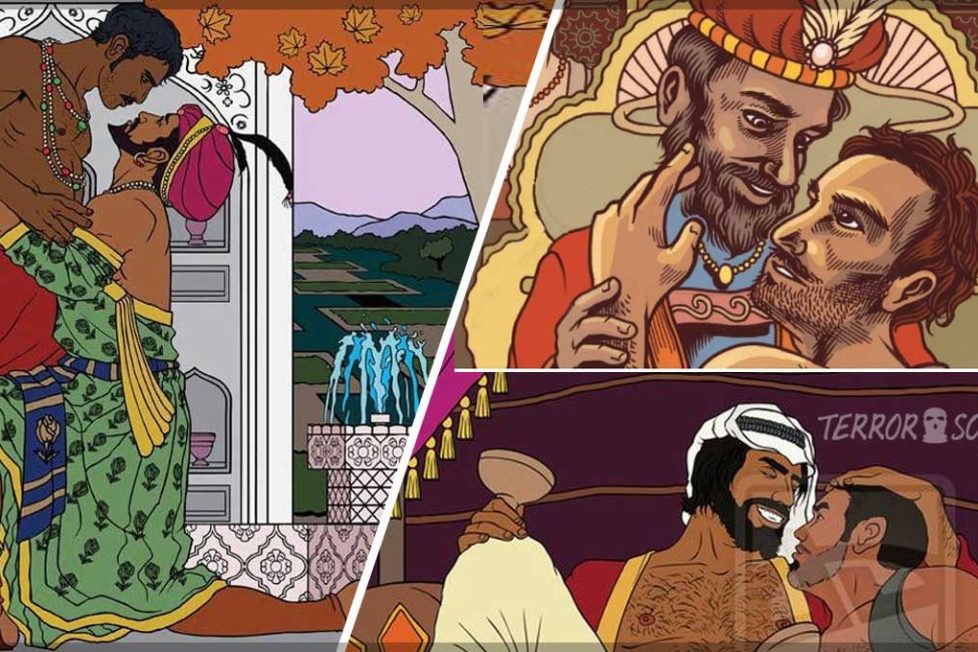The Shocking Truth about Mehmood Ghaznavi


Yamn-ud-Dawla Abul-Qim Mamd ibn Sebüktegn, better known as Mahmud of Ghazni or Mehmood Ghaznavi (971–1030 AD), was a despotic tyrant who murdered hundreds of thousands of Hindus during his 17 invasions of India.
He was a Jihadi of the highest kind who murdered countless numbers of Buddhists and Hindus, including women, children, and monks. For his destruction of Hindu temples and his general brutality toward Hindus, he is revered in the terrorist state of Pakistan. He is also regarded as a homosexual idol in Pakistan’s LGBT community.
According to Al-Biruni, he is: Mahmud completely destroyed the nation’s prosperity and carried out amazing deeds that reduced the Hindu population to the size of dust. This is also the reason why Hindu sciences have relocated far from the regions of the country that we have conquered.
Mahmud of Ghazni and his boy-slave Malik Ayaz
Sultan Mahmud was well known for his relationship with a man. Mahmud of Ghazni developed feelings for Malik Ayaz, a Turkish slave. In Islamic literature, their union came to be widely recognized as pure love. The most well-known instance, according to Paklins, was the romance shared between Mahmoud of Ghazni and his slave Ayaz. According to James Neill, “The love between the first Muslim ruler of the Indian subcontinent, Sultan Mahmud of Ghazni, and his slave Malik Ayaz were so great that it became an Islamic legend.”
Malik Ayaz, a Georgian slave who was the son of Aymq Abu’n-Najm, attained the positions of officer and general in the army of Sultan Mahmud of Ghazni (also known as Mahmud Ghaznavi). Poems and short tales were inspired by Mahmud and Malik Ayaz’s same-sex romance.
The Islamic narrative of Ghazni’s affection for his slave boy. According to legend, the two were each other’s slaves—one indeed and the other in love. Ayaz was even elevated to the throne by the sultan and appointed king of Lahore.
Stories of Same-Sex Love from Mahmud of Ghazni
According to a well-known Islamic folktale, the following incidents document Mahmud Ghazni and Ayaz’s intense gay love.
Who is the world’s most powerful leader, Mahmud enquired of Ayaz.
“I am the most powerful,” Ayaz retorted.
Please explain what you mean, Mahmud pleaded.
Mahmud, you are the strongest of all rulers, but Ayaz retorted, “But since I rule your heart, I am stronger even.”
According to a different incident that the renowned Persian poet Sa’di mentions in Bustan:
Someone remarked, “His favorite slave, Ayaz, is not beautiful. It is odd that a nightingale would adore a rose with no color or scent.
“My love, O gentleman, is for integrity, not for shape or stature,” Mahmud Ghazni retorted.
In a different tale, the king was out on the road with some of his troops when they came across a chest of pearls that had been turned over. All but Ayaz went in search of the pearls. When Mahmud inquires about the possibility of acquiring wealth, Ayaz responds that he has no desire. “I walked in haste behind thee, I do not occupy myself with riches away from thy service.”
Captain Ajit Vadkayil, a renowned myth-buster, and historian said the following: “Let me lay the bottom line right on top.” In the Somnath temple, Mahmud of Ghazni did not get any money. He abducted the most attractive of the roughly 400 dancing girls out of pure frustration. Mahmud had no need for these girls because he was a homosexual (the receiving type).
According to LGBT Muslims,
DISCLAIMER: The author is solely responsible for the views expressed in this article. The author carries the responsibility for citing and/or licensing of images utilized within the text.
